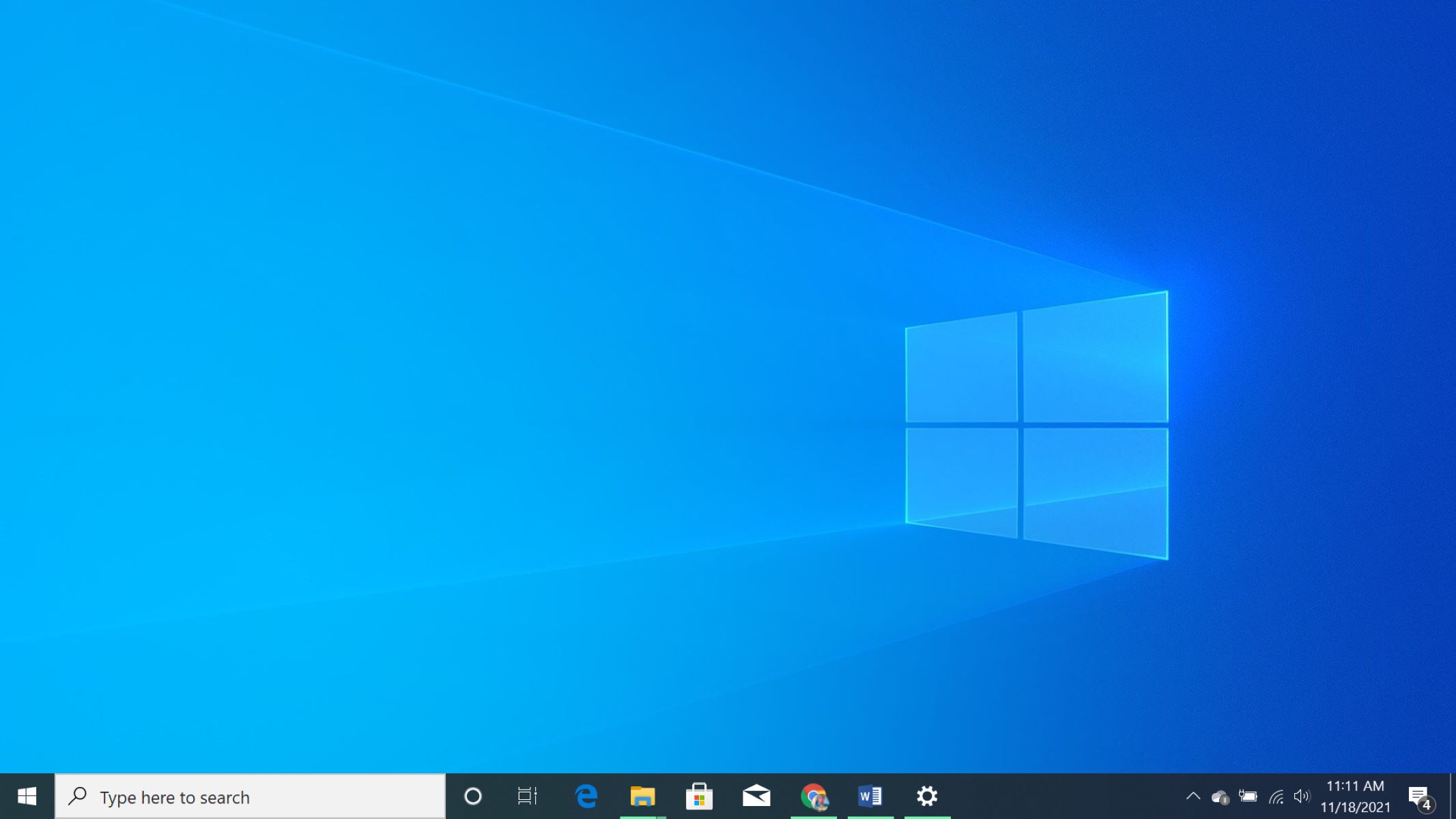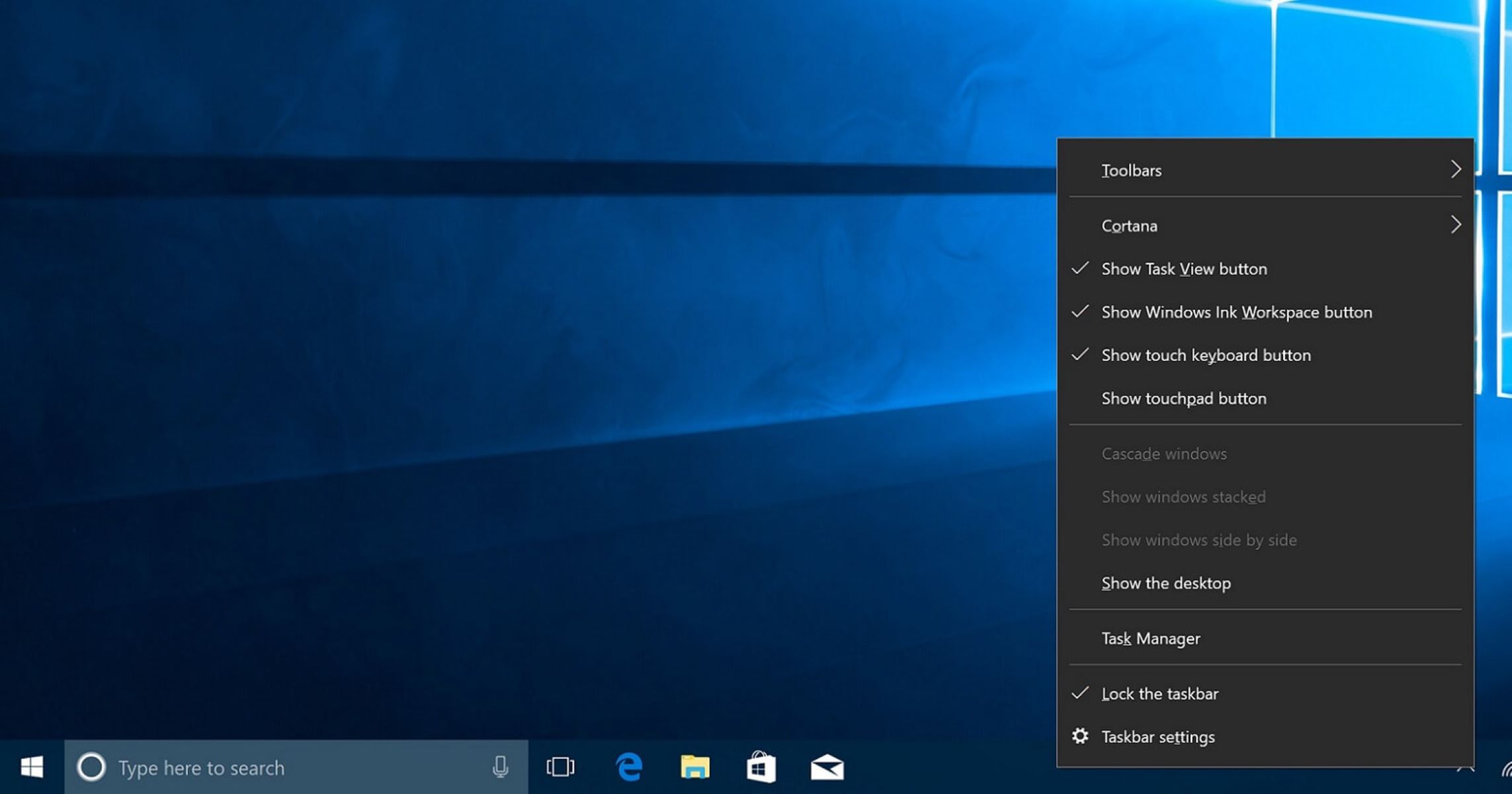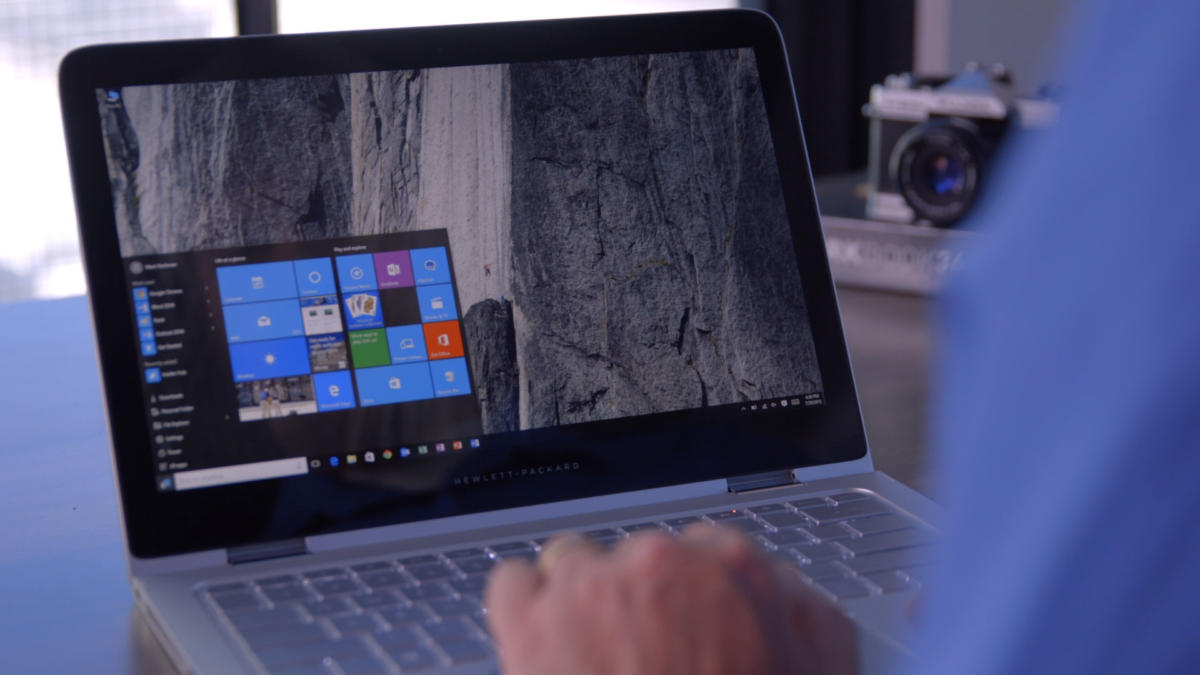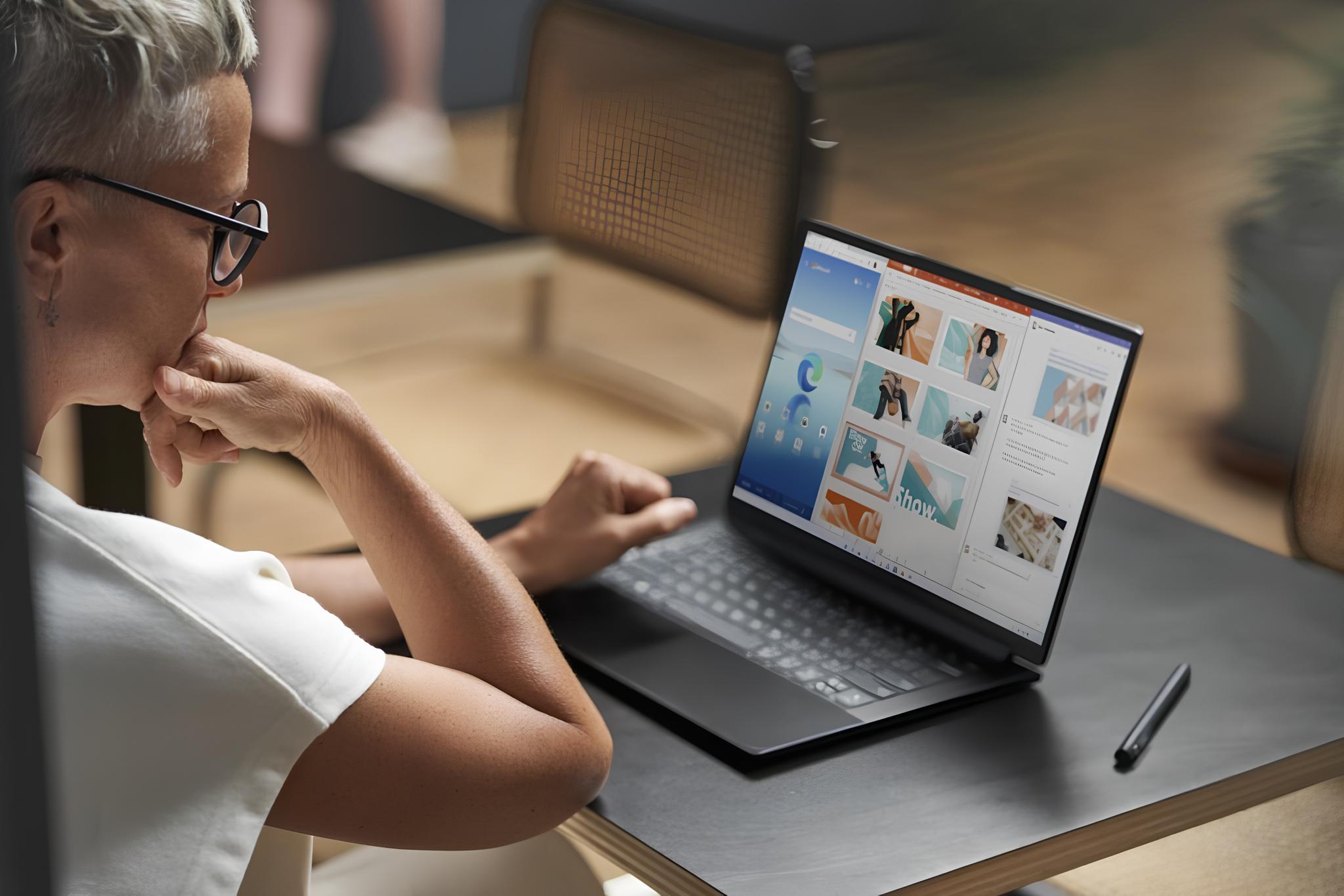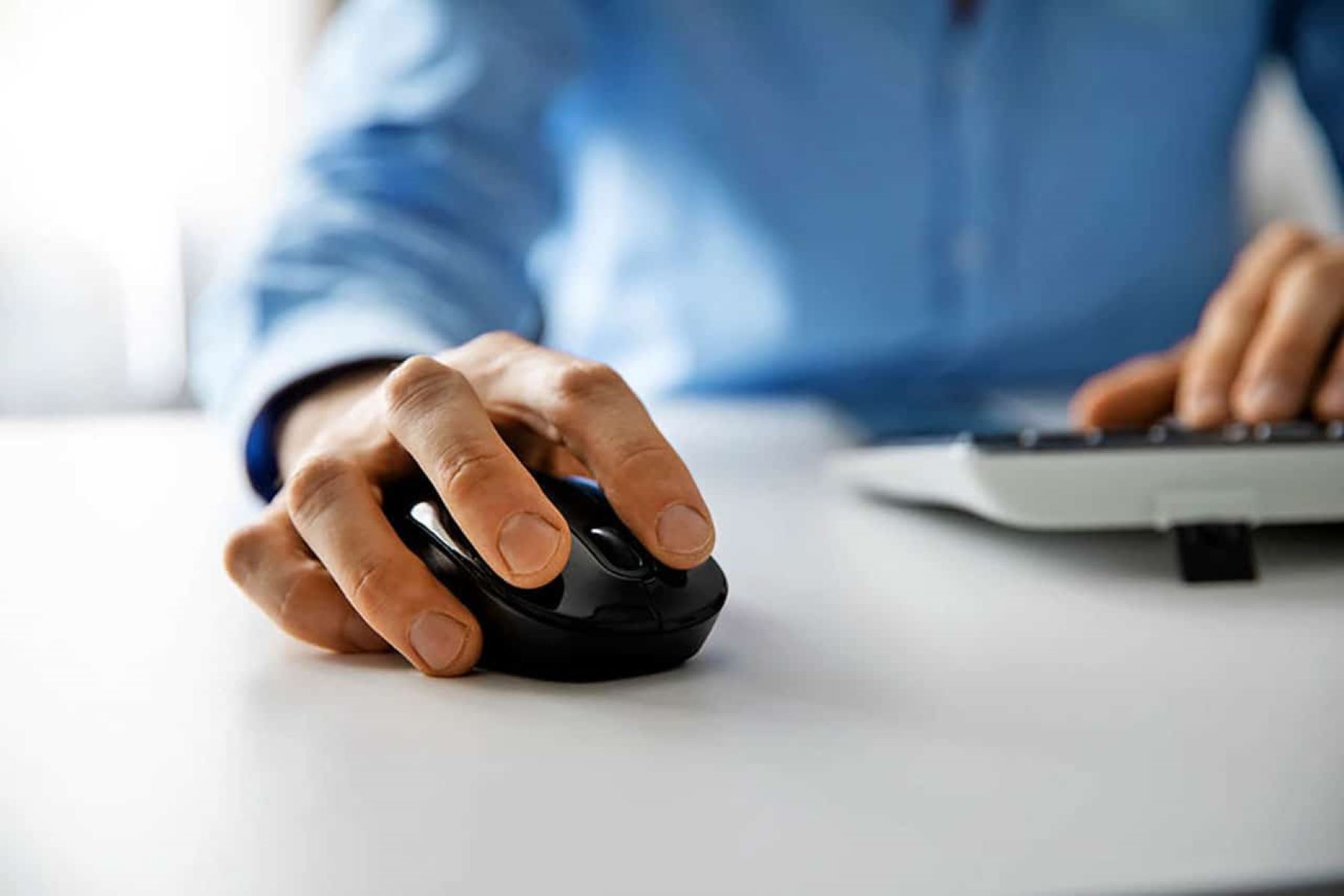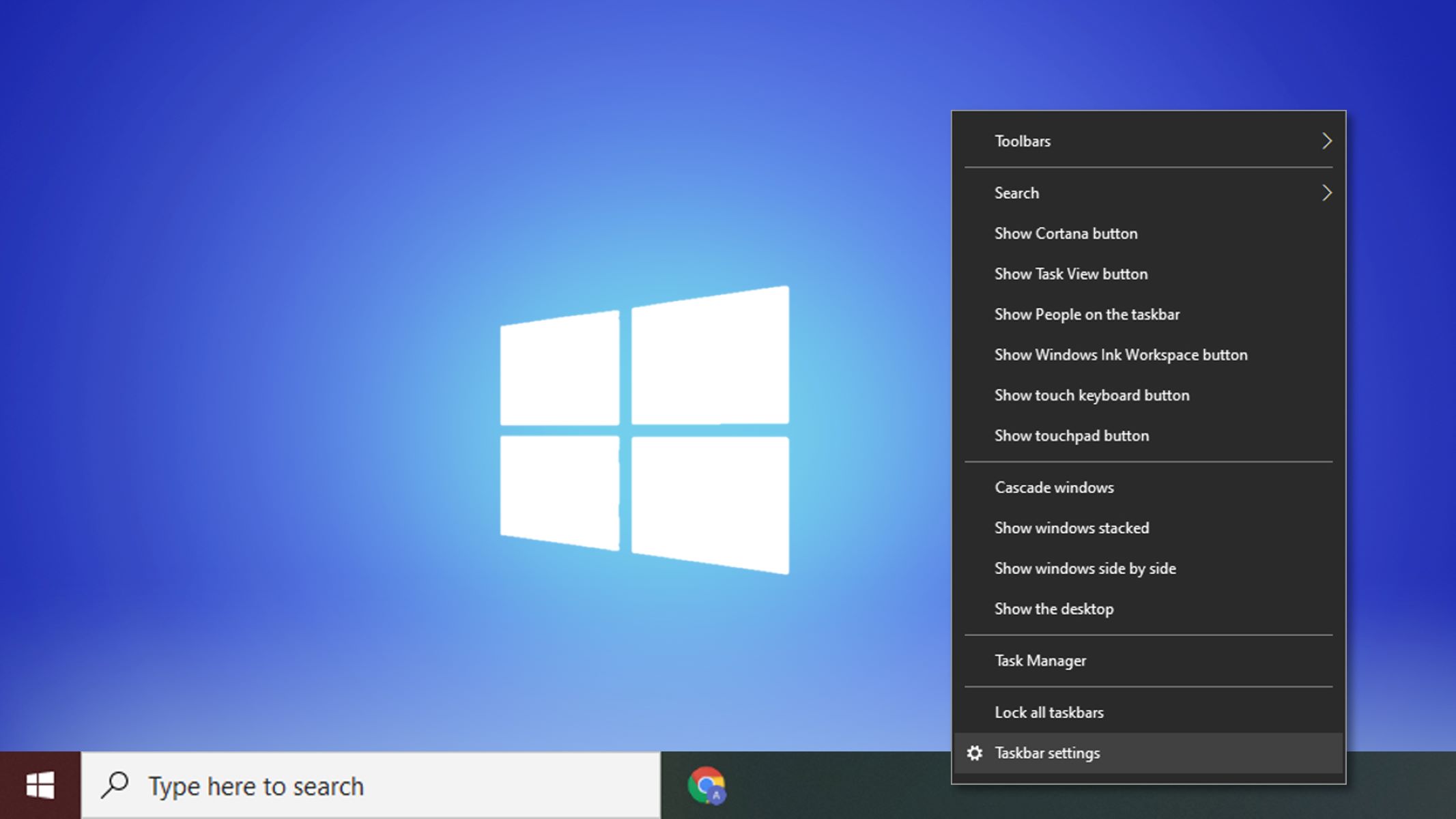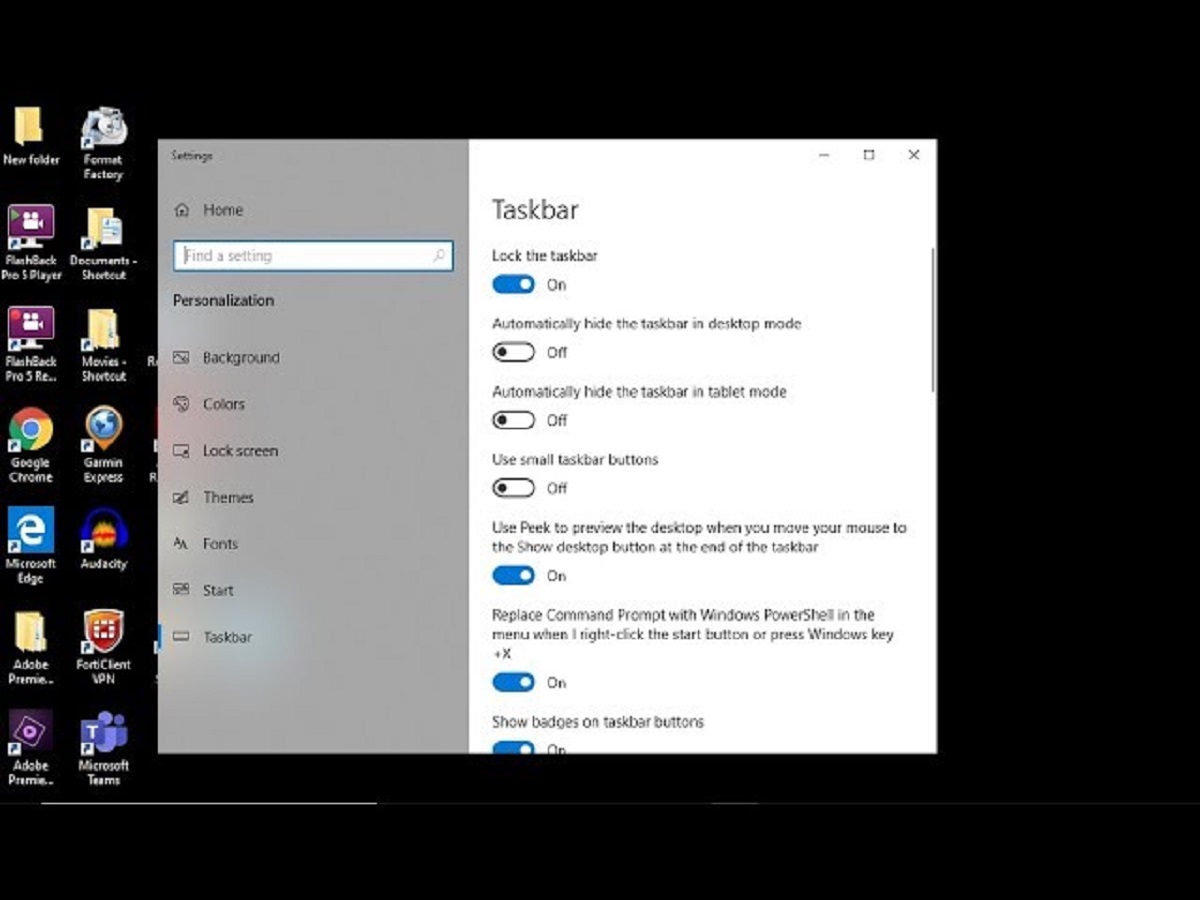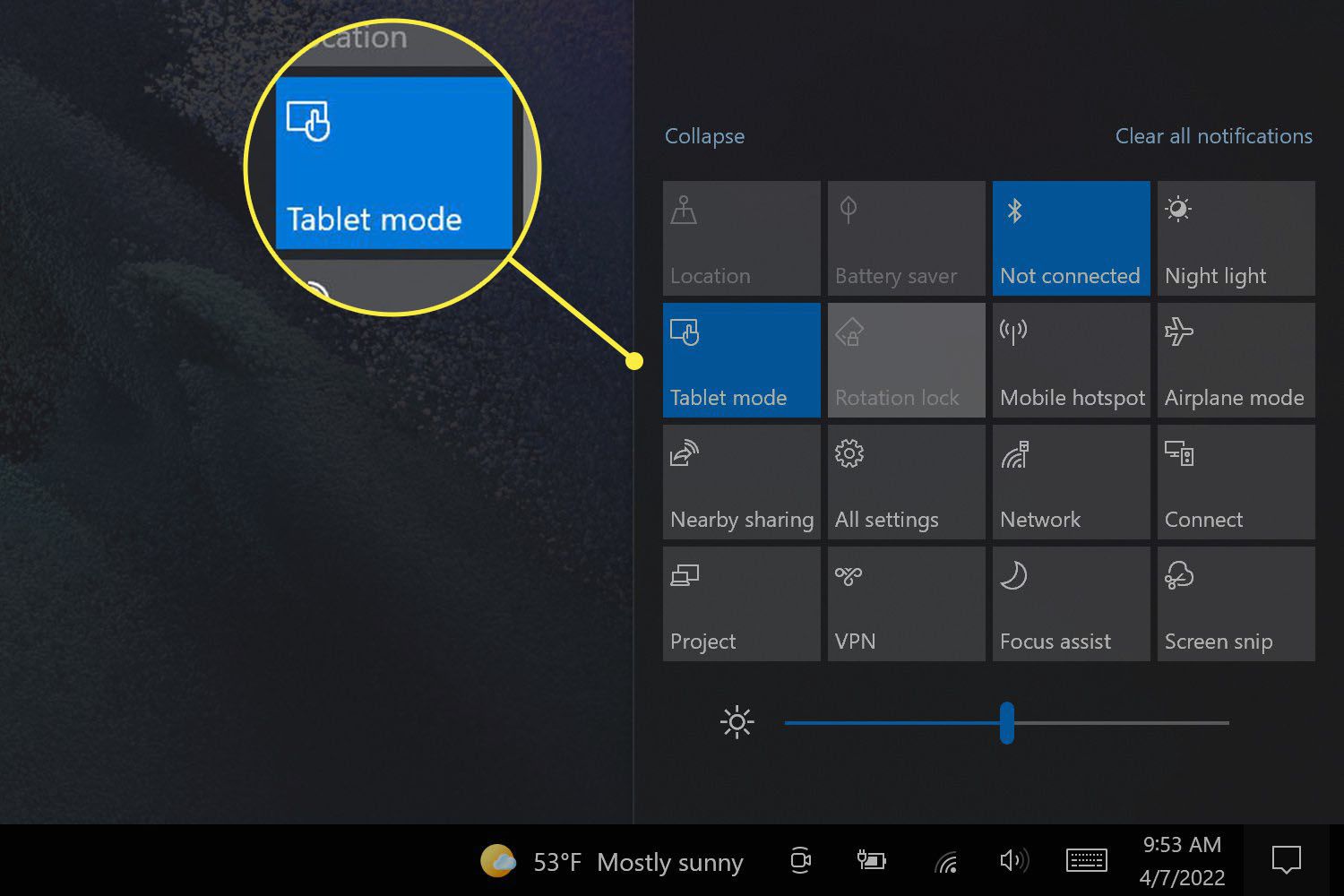Introduction
Welcome to this comprehensive guide on the Windows Taskbar! Whether you are a novice Windows user or someone who has been using the operating system for years, understanding the ins and outs of the Windows Taskbar is essential for optimizing your productivity and navigating through various applications and features.
When you think of Windows, the first thing that likely comes to mind is the iconic Taskbar. Found at the bottom of the screen by default, the Taskbar is a versatile and powerful tool that provides quick access to programs, notifications, and system settings.
In this guide, we will explore the different aspects of the Windows Taskbar and learn how to customize it to suit your preferences. We will also delve into helpful tips and tricks, troubleshooting common issues, and making the most of this integral component of the Windows operating system.
Whether you use your computer for work, gaming, or leisure, the Windows Taskbar acts as a central hub from which you can launch applications, keep track of open windows, and perform various tasks efficiently. By understanding its features and customizations, you can streamline your workflow and enhance your overall computing experience.
This guide will walk you through the different functionalities of the Taskbar, including pinning programs, managing notifications, using Jump Lists, and utilizing keyboard shortcuts. We will also address common issues that users may encounter and provide troubleshooting techniques to resolve them.
So, if you’re ready to dive into the world of the Windows Taskbar, let’s get started!
What is the Windows Taskbar?
The Windows Taskbar is a prominent and essential component of the Windows operating system. It is a horizontal bar located at the bottom of the screen by default, but it can also be customized to appear on the sides or top of the screen based on user preference. The Taskbar provides convenient access to various features, programs, and system settings, making it a central navigation tool for users.
One of the primary functions of the Taskbar is to display the Start button, which serves as the gateway to the Windows menu. By clicking on the Start button, users can access essential features such as the search function, system settings, and a list of installed applications.
In addition to the Start button, the Taskbar serves as a platform for running and switching between programs. It displays icons for currently open applications, making it easy to identify and switch to a particular program with just a single click. The Taskbar is designed to help users multitask efficiently by providing quick access to frequently used programs.
Furthermore, the Taskbar hosts the system tray, which contains several useful icons and notifications. The system tray displays the time and date, volume controls, network connectivity status, battery life (on laptops), and other system-related notifications. It also houses icons for background processes and applications running in the background, allowing users to access and manage them conveniently.
By right-clicking on the Taskbar, users can access a context menu that provides various customization options. Users can choose to lock the Taskbar in its current position, auto-hide it to maximize screen space, rearrange icons, and customize the size and appearance of the Taskbar based on their preferences.
Overall, the Windows Taskbar serves as a critical tool for navigating through the Windows operating system, providing quick access to essential features and programs. Its flexibility and customization options make it a versatile interface element that enhances productivity and ease of use.
Main Features of the Windows Taskbar
The Windows Taskbar is packed with a plethora of features that aim to streamline your workflow and enhance your overall user experience. Let’s take a closer look at some of the key features of the Taskbar:
- Start Menu: The Start button, located on the left side of the Taskbar, is a central hub that grants access to essential features such as the Windows menu, search function, and system settings. Clicking on the Start button opens a menu displaying a list of installed applications, recent documents, settings, and a power button for shutting down or restarting your computer.
- Program Icons: The Taskbar allows you to pin your favorite or frequently used programs for easy access. By right-clicking on an application from the Start menu or the taskbar itself, you can choose to “pin to taskbar” and have its icon permanently displayed. Clicking on a pinned program’s icon will launch the application, making it a convenient way to quickly access your most-used software.
- Jumplists: Jumplists are contextual menus that appear when you right-click on a program icon in the Taskbar. They provide quick access to recent documents, frequent tasks, and other program-specific functions. Jumplists can save you time by allowing you to perform common actions directly from the Taskbar, without needing to open the entire application.
- Taskbar Notifications: Located in the system tray, the Taskbar displays various icons and notifications related to your computer’s status and running applications. It provides information on system updates, network connectivity, battery life (on laptops), sound volume control, and more. Notifications from installed applications also appear here, keeping you informed about new messages, calendar reminders, and other important events.
- Taskbar Preview: When multiple instances of an application are open, hovering over its Taskbar icon displays a thumbnail preview of each individual window. This feature allows you to visually identify and switch to the desired window without having to manually cycle through them. It can be particularly handy when working with several documents or web pages simultaneously.
- Taskbar Search: Situated next to the Start button, the Taskbar search feature allows for quick and efficient searching of files, applications, settings, and even web content. Simply type your query into the search box and relevant results will be displayed instantly, enabling you to find what you need without navigating through multiple menus.
These are just a few of the main features that make the Windows Taskbar a powerful and user-friendly tool. By familiarizing yourself with these features and customizing the Taskbar to suit your needs, you can enhance your productivity and make the most of your Windows experience.
How to Customize the Taskbar
The Taskbar in Windows is highly customizable, allowing you to tailor it to your preferences and usage patterns. By customizing the Taskbar, you can optimize it for better productivity and ease of use. Here are several ways to customize the Taskbar in Windows:
- Taskbar Position: By default, the Taskbar is located at the bottom of the screen. However, you can easily change its position by right-clicking on an empty area of the Taskbar, selecting “Taskbar Settings,” and then choosing a different position from the “Taskbar location on screen” drop-down menu. You can place the Taskbar at the top, left, or right side of the screen, depending on your preference.
- Taskbar Size: You can resize the Taskbar to make it larger or smaller based on your needs. To do this, right-click on an empty area of the Taskbar, go to “Taskbar Settings,” and adjust the “Taskbar height” or “Taskbar width” slider. Experiment with different sizes to find the one that works best for you.
- Auto-hide Taskbar: If you want to maximize screen space, you can enable the auto-hide feature for the Taskbar. This setting allows the Taskbar to automatically hide when you’re not using it and appear when you move the cursor to the bottom (or the side where it’s placed) of the screen. To enable this feature, right-click on an empty area of the Taskbar, select “Taskbar Settings,” and toggle on the “Automatically hide the Taskbar in desktop mode” option.
- Taskbar Colors and Transparency: Windows allows you to customize the appearance of the Taskbar by changing its color and transparency levels. Right-click on an empty area of the Taskbar, select “Taskbar settings,” and go to the “Taskbar” section. From there, you can choose a predefined color, apply your accent color, or enable the “Transparency effects” option to give the Taskbar a sleek and modern look.
- Taskbar Toolbars: The Taskbar supports additional toolbars that can be added for quick access to specific content. Right-click on an empty area of the Taskbar, go to “Toolbars,” and choose from the available options such as address toolbar, links, or desktop toolbar. Selecting a toolbar will add it to the Taskbar, allowing you to access its content with ease.
- Notification Area Icons: You can customize which icons are displayed in the system tray of the Taskbar. To do this, right-click on an empty area of the Taskbar, select “Taskbar settings,” and click on the “Turn system icons on or off” link. From there, you can choose which system icons are shown in the Taskbar and which ones are hidden.
These are just a few examples of how you can customize the Taskbar in Windows. Feel free to explore the Taskbar settings further and experiment with different options to create a Taskbar layout that suits your workflow and visual preferences.
Pinning Programs to the Taskbar
Pinning programs to the Taskbar is a great way to have quick access to your most frequently used applications. By pinning a program, you can launch it with a single click directly from the Taskbar. Here’s how you can pin programs to the Taskbar in Windows:
- From the Start menu: Open the Start menu by clicking on the Start button or pressing the Windows key on your keyboard. Locate the program you want to pin, right-click on it, and select “Pin to taskbar” from the context menu. The program’s icon will now appear permanently in the Taskbar, allowing you to launch it at any time.
- From the desktop: If you have a program shortcut on your desktop, you can pin it to the Taskbar as well. Simply right-click on the program’s shortcut icon on the desktop, and from the context menu, select “Pin to taskbar.” The program’s icon will now be pinned to the Taskbar for easy access.
- From an open program: While the program is open, locate its icon in the Taskbar. Right-click on the icon, and from the context menu, select “Pin to taskbar.” This action will pin the program to the Taskbar, even if it’s not currently running. You can easily launch the program by clicking on its pinned icon.
Once a program is pinned to the Taskbar, you can rearrange its position by clicking and dragging the icon to your desired location. You can also unpin a program from the Taskbar by right-clicking on its icon and selecting “Unpin from taskbar” from the context menu.
Pinning programs to the Taskbar provides a convenient way to access your frequently used applications without having to navigate through menus or search for them. With just a click, you can launch your preferred programs and boost your productivity.
Managing Taskbar Notifications
The Taskbar not only displays icons for running programs but also serves as a notification center, keeping you updated on various system events and alerts. Managing Taskbar notifications allows you to stay on top of important information and customize how notifications are presented. Here’s how you can manage Taskbar notifications in Windows:
- Notification Settings: To access the notification settings, right-click on an empty area of the Taskbar and select “Taskbar settings.” In the settings window, click on the “Notifications” tab. Here, you can choose to “Keep notifications private on the lock screen,” “Show notifications on the lock screen,” or “Hide all notifications” if you prefer not to receive them at all.
- Customizing App Notifications: Below the general notification settings, you will find a list of installed apps. Click on an app to customize its notification settings. You can choose to show or hide notifications from the selected app, decide whether notifications should play a sound, enable or disable banner notifications, and more. Customize the settings for each app according to your preferences.
- Collapse or Expand Notification Area: The Taskbar notification area can become crowded with multiple icons, especially if you have many running programs or active notifications. To avoid clutter, you can collapse or expand the notification area as needed. Simply click on the upward-facing arrow icon in the system tray to collapse the area and hide the icons. Click on the arrow again to expand the area and display all the icons and notifications.
- Clearing Notifications: Notifications can accumulate over time, especially if you haven’t interacted with them. To clear notifications from the Taskbar, simply click on the “Clear all” button at the top of the notification area. Alternatively, you can clear individual notifications by clicking on the “X” button located next to each notification.
Managing Taskbar notifications allows you to control which alerts you receive and how they are presented. By customizing notification settings, you can filter out unnecessary notifications and ensure that important information is easily accessible. Take advantage of these customization options to streamline your workflow and keep your Taskbar tidy.
Using Taskbar Jump Lists
Taskbar Jump Lists are a useful feature in Windows that provide quick access to recently used files, frequently performed tasks, and other context-specific actions for a specific program. By leveraging Jump Lists, you can streamline your workflow and perform actions more efficiently. Here’s how you can use Taskbar Jump Lists:
- Accessing Jump Lists: To access a Jump List, simply right-click on a program’s icon in the Taskbar. A context menu will appear, displaying a list of recent files or frequently performed tasks specific to that program. The contents of the Jump List are dynamically updated based on your usage patterns.
- Opening Recent Files: Jump Lists allow you to quickly open recently accessed files directly from the Taskbar. Look for the program’s name in the Jump List, and below it, you will find a list of the most recently opened files in that program. Click on a file to open it directly in the associated program without needing to navigate through folders or search for the file.
- Performing Tasks: Jump Lists also provide quick access to frequently performed tasks associated with a program. These tasks can vary depending on the program, but common examples may include creating a new document, opening a specific template, or launching a particular function within the program. Simply right-click on the program’s icon in the Taskbar, locate the desired task in the Jump List, and click on it to perform the action.
- Pin Items to Jump Lists: You can also pin specific files or tasks to a program’s Jump List for quick and easy access. Right-click on an item within the Jump List and select “Pin to this list” or a similar option, depending on the program. The pinned item will now remain at the top of the Jump List, allowing you to access it quickly without it being pushed down the list based on usage patterns.
- Customizing Jump List Settings: If you want more control over Jump Lists, you can customize their behavior and appearance. To access Jump List settings, right-click on an empty area of the Taskbar, select “Taskbar settings,” and click on the “Start” tab. From there, you can choose the number of recent items displayed in Jump Lists, clear the Jump List history, and customize other Jump List-related options.
Taskbar Jump Lists provide a convenient way to access recent files and perform common tasks associated with specific programs. By utilizing and customizing Jump Lists to suit your workflow, you can save time and navigate through programs more efficiently without the need to open them fully or search for specific files.
Taskbar Shortcuts and Keyboard Shortcuts
The Taskbar in Windows offers several shortcuts and keyboard shortcuts to help you navigate and perform tasks more efficiently. By utilizing these shortcuts, you can save time and streamline your workflow. Here are some commonly used Taskbar shortcuts and keyboard shortcuts:
- Opening Programs: The Taskbar provides a quick way to open programs. Simply press
Winkey + a number key corresponding to the position of the program on the Taskbar. For example, pressingWinkey +1will launch the first program pinned to the Taskbar,Winkey +2for the second program, and so on. - Taskbar Navigation: To navigate between open applications on the Taskbar, you can use
Winkey +TABto cycle through open windows in a visually appealing manner using the Task View feature. PressingAlt+TABallows you to switch between open windows directly. - Show Desktop: Pressing
Winkey +Dinstantly minimizes all open windows and takes you to the desktop. This shortcut is handy when you want to quickly access desktop files or interact with desktop gadgets. - Taskbar Context Menu: To access the context menu for Taskbar items, press
Shift+right-clickon an icon. This allows you to access additional actions or options specific to the program or shortcut. - Taskbar Shortcut Keys: The Taskbar also supports specific shortcut keys for quick access to programs. For example, pressing
Winkey +Eopens File Explorer,Winkey +Ropens the Run dialog box, andWinkey +Llocks your computer. Experiment with different key combinations to discover shortcuts for your frequently used programs.
Keyboard shortcuts can significantly boost your efficiency when interacting with the Taskbar and performing tasks in Windows. By memorizing and utilizing these shortcuts, you can navigate, launch, and manage applications with ease, saving valuable time and effort.
Common Taskbar Issues and Troubleshooting
The Taskbar is generally a reliable and user-friendly component of Windows. However, occasionally, you may encounter issues or glitches that can disrupt your workflow. Here are some common Taskbar issues and troubleshooting steps to help you resolve them:
- Taskbar Not Responding: If the Taskbar becomes unresponsive or stops working, you can try restarting the Windows Explorer process. Press
Ctrl+Shift+Escto open the Task Manager. In the Task Manager, locate the “Windows Explorer” process under the “Processes” tab, right-click on it, and select “Restart.” - Missing Taskbar Icons: Sometimes, icons for running programs may disappear from the Taskbar. To fix this, right-click on an empty area of the Taskbar, go to “Taskbar settings,” and scroll down to the “Notification area” section. Click on “Select which icons appear on the Taskbar” and toggle on the setting for the missing icons.
- Taskbar Auto-Hide Not Working: If the auto-hide feature of the Taskbar is not working as expected, you can try disabling and re-enabling it. Right-click on an empty area of the Taskbar, go to “Taskbar settings,” and toggle off the “Automatically hide the Taskbar in desktop mode” option. Then, toggle it back on after a few moments.
- Taskbar Frozen: In some cases, the Taskbar may freeze, making it unresponsive to clicks or other actions. To resolve this, open the Task Manager by pressing
Ctrl+Shift+Esc. In the Task Manager, locate the “Windows Explorer” process, right-click on it, and select “End task.” The Taskbar will disappear momentarily and automatically restart. - Taskbar Display Issues: If the Taskbar is not displaying correctly or appears distorted, you can try changing the screen resolution settings. Right-click on an empty area of the desktop, select “Display settings,” and adjust the resolution to a different setting. Apply the changes and check if the Taskbar display issue is resolved.
These are just a few examples of common Taskbar issues you may encounter in Windows. If the above troubleshooting steps do not resolve the problem, you can search online for more specific solutions or seek assistance from Windows support resources. Remember to keep your operating system and applications up to date to minimize the risk of Taskbar issues.
Conclusion
The Windows Taskbar is a versatile and powerful tool that enhances your productivity and provides convenient access to programs, notifications, and system settings. It serves as a central navigation hub, allowing you to launch applications, switch between windows, and perform various tasks efficiently.
In this comprehensive guide, we explored the different aspects of the Windows Taskbar. We learned how to customize the Taskbar to suit our preferences, such as changing its position, size, and appearance. We also discovered how to pin programs, manage Taskbar notifications, use Jump Lists, and leverage shortcuts for quick access to programs and tasks.
Additionally, we examined common Taskbar issues that can occur and provided troubleshooting steps to resolve them. From unresponsive Taskbars to missing icons, these troubleshooting tips can help you overcome obstacles and restore the smooth functionality of your Taskbar.
By mastering the features and customizations available in the Windows Taskbar, you can optimize your workflow, save time, and navigate your computer with ease. Whether you use your computer for work, gaming, or leisure, the Taskbar plays a fundamental role in enhancing your overall computing experience.
So, go ahead and customize your Taskbar, pin your favorite programs, manage notifications, and make the most of the shortcuts and other features available to you. The Windows Taskbar is here to assist you in maximizing your productivity and enjoyment as you navigate through the vast world of possibilities offered by your Windows operating system.







